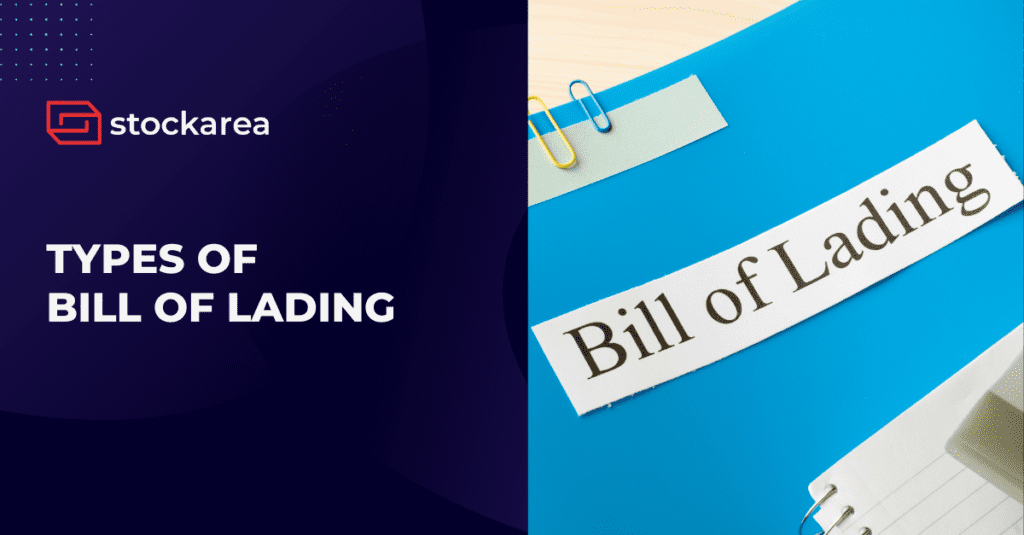A bill of lading (BOL) is a contractual document that is exchanged between a shipper and a carrier. It mentions the details of the kind, quantity, and destination of the transported items. When the courier delivers items to the predetermined destination, the BOL also serves as a shipment receipt. This paperwork is attached to the shipped items, regardless of the manner of shipping.
The BOL is undoubtedly the most complicated logistical document. Each type of BOL has a specific function. Determining when and how to apply the appropriate template for the document can be challenging, especially when additional requirements must be met, like freight classification, packing requirements, ownership etc. Along with functioning as formal evidence of the contract, receipt of goods, and record of title, each type of Bill of Lading has distinct characteristics that contribute to the effective movement of commodities throughout the shipping lifecycle.
1. Straight Bill of Lading
This type of Bill of lading is also known as a “Consignment BOL” and is used when transporting goods to a customer who has already paid for them. A Straight BOL is a document in which a seller agrees to send goods to a specific location by a particular mode of transport. The BOL is subsequently allocated to a specific consignee. The straight Bill of Lading contains information about the kind, amount, and quality of goods. It can minimize demurrage and detention charges, as the original BOL is not required to acquire the items.
2. Order Bill of Lading
Order BOL is the original copy typically used in conjunction with a Letter of Credit to facilitate the safe transfer of goods between buyer and seller. This BOL is used when payment is not made in advance, and the cargo is deemed negotiable (i.e., the owner is transferable and the ultimate user has not been identified).
3. Bearer Bill of Lading
A Bearer BOL is a document that says that delivery will be made to the bearer of the paper. Such a BOL can be expressly created, or it can be an order bill that does not specify the consignee, either in its original form or through an endorsement in blank. Physical delivery of a bearer banknote can be negotiated. They are used in order to transport bulk freight in tiny quantities.
4. Negotiable Bill of Lading
This type of BOL contains explicit instructions to deliver the goods to anyone in possession of the original copy of the invoice, which itself represents the freight’s title and control. The buyer or receiver or their agent is required to obtain and produce an original copy of the BOL at the discharge port when using this form of the Bill. The freight will not be released without an original bill copy.
5. Non-negotiable Bill of Lading
This type of Bill of Lading identifies the consignee or the receiver to whom the freight will be shipped and delivered. However, it does not serve the purpose of establishing ownership of the commodities. The allocated receiver or buyers can claim the shipment by validating their identity under this Bill.
6. Electronic Bill of Lading
Electronic BOL digitize and replace the essential functions of paper bills of lading. Rather than physically presenting a piece of paper to interested parties, the digital version substitutes the hard copy. It is occasionally favored due to the benefits it provides, such as more efficient transactions, more accessible access to the BOL via a web browser, and less paperwork to misplace.
Related posts
- LTL Vs FTL : 7 Major Differences Between LTL & FTL
- Top 10 Customs Clearance Agents In Bangalore
- 6 Effective Ways To Grow Your Logistics Business
- CIF vs FOB: 6 Key Differences
- What is Logistics?
- The Ultimate Guide On Third-Party Logistics (3PL)
- List Of 11 Best Logistics Companies In India
- What Is Transportation Management System?
- 10 Key Benefits Of Transportation Management System (TMS)
- 10 Practical Tips To Reduce Warehouse Costs
- The Complete Guide On Fourth Party Logistics (4PL)
- Logistics Market In India
- 10 Biggest Challenges Faced By Logistics Companies
